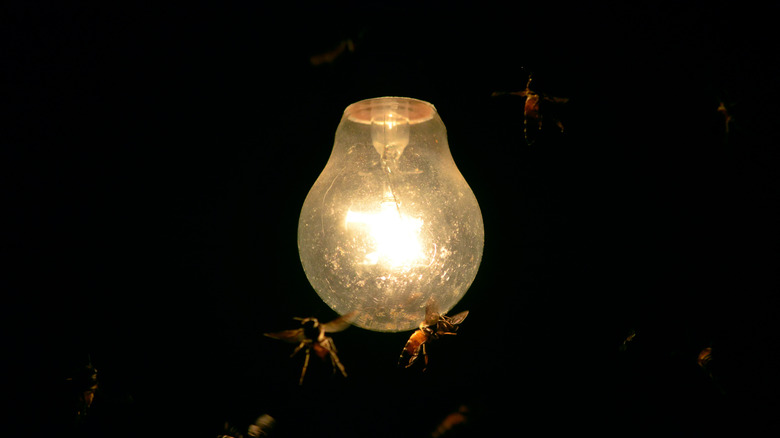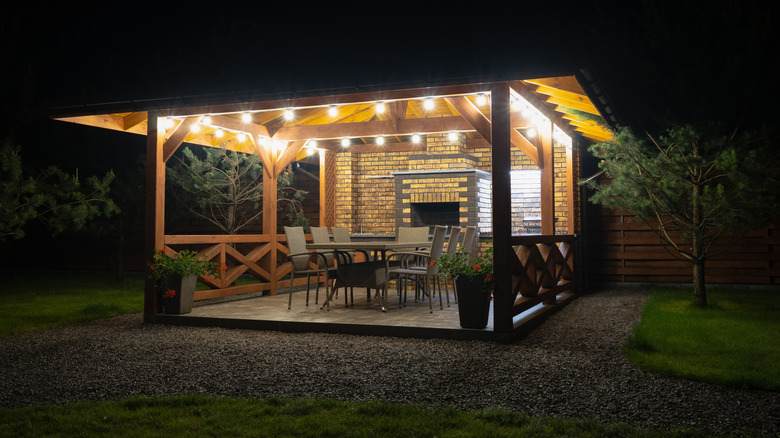The Type Of Light Bulb To Use For Outdoor Lighting That Keeps More Bugs Away Than Any Other
A particular type of bulb has been proven to keep more bugs away in an outdoor setting than any other. So if you're constantly swatting away gnats or moths every time you step outside after dark, the problem could be your porch light. When it comes to repelling insects from the lights in your outdoor space, it all depends on the heat and color temperature of the light bulbs you choose. So here's what you need to know: Choose warm-spectrum LED bulbs for outdoors. Because a light that emits a warm-toned glow, typically in the yellow or amber range, tends to be far less enticing to bugs than cooler white or blue-spectrum lights.
This means that incandescent bulbs, known for their higher heat output and paler glow, actually draw in more insects — even more than some fluorescent light bulbs. On the other hand, warm-spectrum LED bulbs not only stay cooler but emit a wavelength that bugs generally don't respond to, making them a top choice for outdoors. For homeowners looking to maximize their porch's comfort level this summer without turning it into an insect hangout, the solution could be as simple as a light swap. Choosing warm LED lights with a lower Kelvin rating, ideally under 3000K, is an easy upgrade that makes a noticeable difference. These light bulbs are widely available, energy-efficient, and last longer than other options, making them a win on multiple fronts. It's one of the best ways to keep bugs away from your porch lights.
How to make sure your outdoor light keeps bugs away
It's clear that the type of bulb you install outdoors matters. But if you're still getting swarmed, your placement may be part of the problem. Bugs aren't just drawn to light, they're also drawn to its proximity. Hanging a bright bulb directly above a doorway or gathering spot gives insects a clear path into your home. That's why one of the most effective strategies to reduce bug traffic is creating distance between your light source and point of entry. Lights mounted higher or farther from doorways give bugs less opportunity to follow you inside. Some setups use lighting integrated into railings or placed closer to the ground, which helps redirect insects away from your typical walking paths.
Another tactic to reduce unwanted winged guests? Lower the brightness. The higher the lumen count, the more attractive the glow is to bugs. Soft, warm LEDs are ideal not just because of their color output but because they come in a range of brightness levels that allow for functional but subtle illumination. Multiple smaller lights spaced strategically can do a better job of lighting your space without creating a spotlight for insects. Pair that with natural bug deterrents such as citronella and essential oils to get even more relief and repel bugs naturally. Getting the lighting layout right from the start also makes a difference, especially when considering how to choose and place the right size outdoor light to fit your space and lighting needs.

